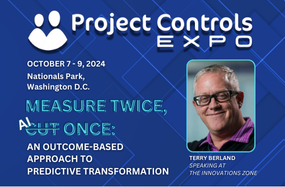
How to Create a Data-Driven Culture for Better, Faster Decisions

Do you gaze upon data-driven organizations with envy?
Changing culture to favor data-driven decision-making will always be a challenge. However, the result of a transparent work environment that celebrates wins and processes means faster, better decisions for your company—and others will, in turn, begin to envy your ability to facilitate data with ease.
Below are 5 steps to creating a data-driven culture at your organization.
Step 1: Get Cross-Departmental Input & Buy-In
The first step to implementing a data-driven culture is gaining cross-departmental input and buy-in.
It first helps to overcome discriminatory behavior and realize that humans naturally resist change. Therefore, employees should cultivate awareness—everyone has a bias, for example, but it doesn’t have to manifest negatively.
Second, collaboration is key to getting input, making your strategy more likely to stick.
All levels of an organization must buy into the change for a top-down and bottom-up effect. Consider accepting the fact that short-term pain may be felt at first. Ultimately, there will be long-term benefits. These benefits should be clearly defined, for every layer of your organization is key to long-term implementation.
McKinsey states, “Over-centralization creates bottlenecks and leads to a lack of business buy-in. And decentralization risks different data models that don’t connect.” Therefore, it makes sense to try to ensure that all departments and team members are on board with data integration, through and through.
Step 2: Encourage Transparency for Change Management
Before a data transparency initiative, remember that negative input is not wrong and is probably expected. If there is a breakdown in the proposed process, you need to be able to pivot quickly and find out why.
Implementing a data transparency policy is essential, but before you do so, keep these four change management principles in mind:
- Understand change
- Plan change
- Implement change
- Communicate change
That first step—understanding change—may sound simple, but it’s more complicated than you think.
First, it helps to understand why you need to change and the critical objectives to feel motivated to effect change. For example, what are the organizational benefits? What will be the positive impact on people in the company? How will it affect the way people work? What will team members and other departments do to incorporate changes successfully?
To successfully plan a change, it helps to obtain sponsorship, company-wide buy-in, and executive involvement. Ultimately, company leadership should know what the final impact will look like on a larger scale. Implementing that change is another step altogether, though.
One thing that can help in your quest to a data-driven organization is ensuring everyone involved understands what needs to happen and how it will affect them personally. Agree upon success criteria and identify all key stakeholders to understand their level of personal involvement. Also, make sure any training needs and change agents are put into place so that people’s habits can transform in a supported, structured manner. Lastly, perhaps the most crucial element is communication. The article cited above cites the ADKAR Change Management Model tool organizations utilize to implement lasting change. It describes five features useful in effecting transformation: awareness, desire, knowledge, ability, and reinforcement.
Step 3: Promote Behavior Change on All Levels
For change to be effective and long-lasting, the reasoning behind the change needs to be explained and should be substantial. Managing by data means opening and having conversations devoid of emotion so you can get to the heart of the matter and course correct. Teams can course correct before flawed or incomplete data gets out of hand.
According to Ted Colbert, CIO of Boeing, “When people begin to believe in the data, it’s a game changer: They begin to change their behaviors, based on a new understanding of all the richness trapped beneath the surface of our systems and processes.”
Some basic guidelines include simple awareness, collaboration, and looking for conflicting information. Healthline’s definition of cognitive bias is “a flaw in your reasoning that leads you to misinterpret information from the world around you and to come to an inaccurate conclusion.” Furthermore, researchers have cataloged over 175 cognitive biases, but a few common types include confirmation bias, mental inertia, group thinking, and optimism bias.
The sheer number of cognitive bias manifestations points to a need to question longstanding biases in oneself and others and emphasizes the importance of confronting longstanding behavior in employees. Suppose colleagues recognize that some types of behavior, such as confirmation bias, are mainly unconscious. In that case, they may be more willing to work on updating them to fit their daily reality—rather than what they have long imagined.
To make a long story short, the more people can look to data to shape their behavior, rather than unconscious biases, the better.
Step 4: Implement Agile Project Management
It’s good practice to avoid administrating your teams to death with completing tasks. Checking boxes is good but spending more time on administration and less time on work creates a culture of monotonous distrust. Also, what many organizations have learned is composed of lessons about project management styles. For example, waterfall-style management fell from popularity, and agile project management rose to the top.
Forbes defines agile project management as “an iterative, reflective, and adaptive project management methodology. In an Agile practice, a project is broken up into sub-projects. These are typically referred to as sprints. At the end of each sprint, stakeholders and the team review their work, make adjustments for the next sprint, and repeat until complete. The point of Agile is the constant, incremental delivery of value throughout the project, instead of all at once at the end.”
As simple as this all sounds, broken down into steps, the ongoing pandemic has affected the implementation and deployment of agile project management via various contributing factors. For example, research indicates several challenges like estimation, planning, and elicitation. The researchers go on to elaborate upon COVID-19-related challenges: “The most important challenge in the manufacturing industry is to develop the resilience across the value chain. Automation provides a time-saving and efficient execution of manual tasks, but India has a slow automation rate.”
Although agile project management is ‘all the rage,’ proverbially speaking, it may not always be the most appropriate fit for the project.
As detailed by Business Analyst Learnings, “The waterfall methodology is ideal for projects where all the requirements are available upfront. Think of a critical, time-sensitive software used to control an autonomous vehicle or one used for real-time feedback in a manufacturing plant. Such environments require high-end precision, and the software must be accurate first. A sequential implementation process highlighting the respective deadlines, including the expected product launch, would be an idea for such products.”
The authors point out that agile models follow practical, trial-and-error techniques allowing teams to fail before building for scale and efficiency.
Step 5: Manage Process & Celebrate Wins
The project management process can be long and frustrating, at times, if you’re still trying to decide on the best approach for your team or project. However, managing the process rather than the result is a best practice. In general, it’s wise to democratize the data. The result is a key indicator, but the process is just as, if not more important.
Moreover, celebrating wins makes the process more rewarding for all involved. The company wins when the culture transforms. Instead of asking what wasn’t done, observe how the process worked.
And remember: don’t give up! Implementation and repetition are keys to success. Creating a culture of data is not a one-and-done shift in procedural change. If you establish value early in the process, you won’t have to continue to fight and eventually abandon the change.
You can consider celebration an essential part of the “project closing” phase, the final step of the project management life cycle. According to FounderJar, the closure phase is when a project is gradually ending, and it is the job of the project manager to close it: “At this point, the project manager will be hosting a series of post-execution meetings and reviews to go over the whole process from the initiation phase. The manager and the team discuss the team’s strengths and weaknesses during execution. This will help them improve for subsequent projects.”
However, this phase is often “one of the [most] rewarding phases of a project life cycle.” Considering that you can survey what went well throughout a project, it makes sense that you would take the opportunity to pause and reflect on team wins and take time to celebrate them. This allows the time for rewarding team members for how they excelled and what they should try to repeat in the future.
One tool guaranteed to infuse your organization with more data forward thinking is LoadSpring ProjectINTEL.™ Our latest innovation prepares your organization for AI/BI solutions by reporting on the health of your data and providing a usable data lake. LoadSpring ProjectINTEL harvests your raw data, regardless of the source application, transforms, and builds a usable data lake.
LoadSpring ProjectINTEL is the only system that provides feedback on the health of your data and empowers you to configure and filter your data to answer your business questions. Regardless of where you are on your journey to creating a data-driven culture for decision-making, LoadSpring ProjectINTEL ensures accurate, trusted data to ensure you are building a foundation for AI/BI and data-driven decisions.
To learn more about how to get started with data as the basis for your organization’s culture, contact LoadSpring today!








